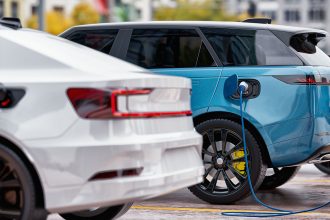By Auto Trends Today
In an age where convenience, flexibility, and value for money reign supreme, traditional vehicle ownership is being redefined. The global automotive landscape is witnessing a major transformation — one driven not by combustion engines or electric powertrains, but by a novel business model: car subscription services. Once considered a niche concept, car subscriptions are now reshaping urban mobility and consumer preferences worldwide, rapidly gaining traction among millennials, digital natives, business travelers, and eco-conscious individuals alike.
What is a Car Subscription Service?
A car subscription service offers consumers the ability to drive a vehicle for a recurring monthly fee without the long-term commitment of ownership or leasing. This all-inclusive fee typically covers:
- Insurance
- Maintenance and servicing
- Road tax and registration
- Roadside assistance
- Sometimes, even the cost of tires and wear-and-tear parts

Unlike traditional financing or leasing, car subscription services often allow subscribers to swap vehicles based on their needs, opt out anytime, and avoid large upfront payments — making them particularly appealing in today’s dynamic and fast-paced world.
Key Drivers Behind the Surge in Popularity
- Changing Consumer Behavior
Modern consumers, especially younger generations, are prioritizing access over ownership. Just as Netflix changed how we consume movies and Spotify revolutionized music access, car subscription services are offering freedom without the financial and logistical burdens of car ownership.
- Urbanization and Space Constraints
In major cities across the globe — from New York to London, Singapore to Kuala Lumpur — limited parking, traffic congestion, and emission zones are making car ownership less practical. Subscriptions offer a smarter and more sustainable alternative to car ownership in dense urban settings.
- Technological Advancements
The rise of mobile apps and cloud-based fleet management tools have made it seamless for providers to manage subscriptions, track vehicle performance, and deliver real-time customer service. Digital-first experiences are a huge draw for tech-savvy customers looking for on-demand mobility.

- Economic Uncertainty and Flexibility
Post-pandemic financial insecurity, job instability, and a volatile global economy have made long-term financial commitments less attractive. Car subscriptions offer risk-free mobility with shorter contracts, usually on a month-to-month basis, allowing users to pause or cancel when needed.
- Sustainability and Environmental Awareness
With growing awareness about climate change and carbon footprints, many subscription platforms now offer hybrid or fully electric vehicles. Users can test drive EVs without committing to ownership, contributing to greener transport solutions and reducing urban emissions.
Who Is Driving the Demand?
Car subscription services are not just a millennial fad. A wide range of consumer segments are embracing the trend:
- Business Professionals who travel frequently and want hassle-free, premium mobility
- Young Families needing flexible transport for changing needs
- Digital Nomads and Remote Workers who relocate often
- Eco-Warriors looking to reduce their environmental impact
- Startups and SMEs using subscription fleets as a cost-effective business mobility solution

Popular Global and Regional Providers
Several automotive giants and startups are racing to dominate this space:
- Care by Volvo – Sweden-based Volvo’s global program offers flexible premium car subscriptions
- Porsche Drive – Ideal for enthusiasts who want to rotate between performance models
- Sixt+, Hertz My Car, and Enterprise Car Club – Renowned rental companies adapting to new mobility preferences
- Flux (Malaysia), Myles (India), and Drover (UK) – Regional platforms making waves in local markets
Each of these services tailors offerings based on geography, customer segment, and vehicle type, further accelerating adoption.
The Benefits That Set Car Subscriptions Apart
|
Feature |
Car Ownership |
Car Leasing |
Car Subscription |
|
Long-term commitment |
Yes |
Yes |
No |
|
Maintenance included |
No |
Sometimes |
Yes |
|
Insurance included |
No |
Sometimes |
Yes |
|
Vehicle swaps allowed |
No |
Rarely |
Yes |
|
Upfront costs |
High |
Moderate |
Low |
|
Cancellation flexibility |
None |
Limited |
High |
Potential Challenges Ahead
While car subscriptions offer compelling advantages, the model is not without limitations:
- Higher monthly fees than leasing or ownership in the long run
- Limited availability in some rural or underdeveloped regions
- Vehicle availability issues during high-demand periods
- Regulatory barriers in countries with strict automotive policies
Still, as providers scale up and streamline their operations, these challenges are expected to diminish, further improving accessibility and affordability.
Future Outlook: Is This the End of Car Ownership?
The car subscription model may not replace traditional ownership overnight, but it is undeniably transforming the automotive industry. As more automakers shift from product providers to mobility service providers, and as consumers demand more convenience, transparency, and flexibility, the market for car subscriptions is set to grow exponentially.
Analysts project the global car subscription market could reach over $12 billion USD by 2030, driven by rising urban populations, smart cities, electric vehicle integration, and changing cultural attitudes toward ownership.
In essence, the car subscription service is not just a product — it’s a lifestyle choice. It signals a broader move toward consumption models that are responsive, sustainable, and future-ready.
Conclusion
As the mobility revolution gains pace, car subscription services are poised to be a cornerstone of modern transport solutions. They blend the freedom of driving with the simplicity of subscription — a powerful combination for individuals, families, and businesses alike. Whether you’re a city dweller, a travel enthusiast, or an entrepreneur, subscribing to a car may just be the most forward-thinking way to move.








